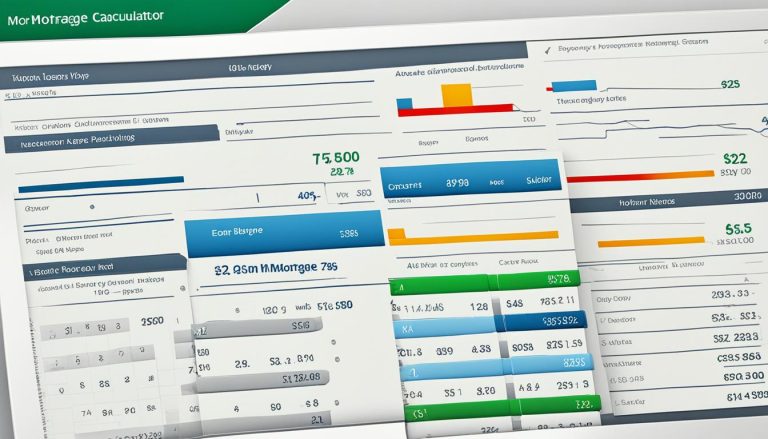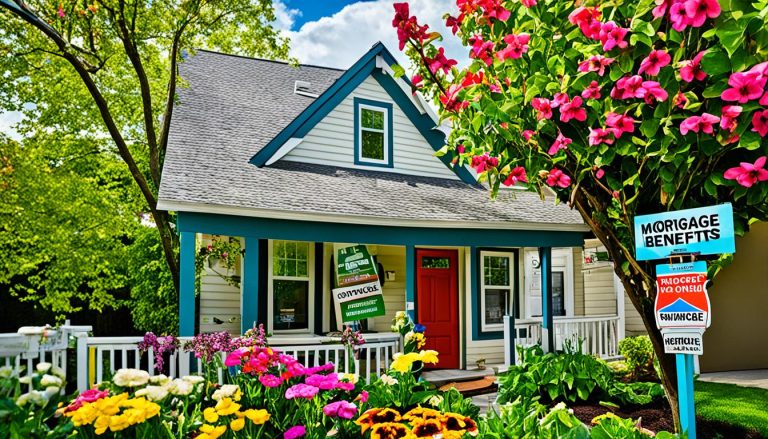Are you a homeowner in the UK who’s considering renovating your property? With the costs of home improvements steadily rising, it’s crucial to explore your financing options carefully. But have you ever wondered if borrowing extra on your mortgage could be the solution? This comprehensive guide will delve into the ins and outs of using your mortgage to fund your home makeover.
Funding Home Renovations: Exploring the Options
Before embarking on any home renovations, it’s crucial for homeowners to carefully assess the costs involved. By getting quotes from at least three different builders, homeowners can gain a clear understanding of the expenses associated with their planned projects. Whether it’s a loft conversion, kitchen remodel, or any other significant home improvement, the scale and complexity of the work can significantly impact the final price tag.
Alongside evaluating the renovation costs, homeowners should also consider the potential value addition that these improvements may bring to their property. For instance, a loft conversion – one of the most popular ways to maximise living space – can cost up to £40,000 but could also increase the home’s value by 10 to 20 per cent. By carefully assessing both the renovation costs and the value addition, homeowners can make informed decisions about the most suitable financing options for their home improvement projects.
Assessing Renovation Costs
Before embarking on any renovations, it is important for homeowners to get quotes from at least three different builders, as costs can vary widely depending on the type and scale of the work. This will help them to accurately budget for their home improvement projects and identify the most cost-effective solutions.
Evaluating the Value Addition
Homeowners should also factor in what the renovations may add to the value of their homes. For example, a loft conversion, one of the most popular ways of maximising space, can cost as much as £40,000 but could also elevate a home’s value by 10 to 20 per cent. By carefully assessing the potential value addition, homeowners can make informed decisions about the most suitable financing options for their home improvement projects.

Borrowing Extra on Mortgage for Renovations
For homeowners embarking on significant home renovations that require a larger sum, borrowing extra on their mortgages can be a viable option to raise the necessary capital. However, this approach isn’t always straightforward, particularly for older borrowers.
Understanding the Process
When remortgaging to borrow extra for home renovations, lenders want to see evidence that the borrower will still have a stable income once they retire. Lenders may also agree to lend only over a shorter term, which can lead to higher monthly repayments.
Factors Lenders Consider
Lenders will carefully assess the borrower’s financial situation, including their existing mortgage balance, the value of their property, and their ability to maintain the increased repayments. There is also a risk of repossession if the homeowner is unable to keep up with the higher monthly payments.
Advantages and Disadvantages
Borrowing extra on a mortgage for renovations can provide homeowners with a larger lump sum to fund their home improvement projects. However, the extended repayment period may result in paying more interest over time. Additionally, for some older borrowers, taking on this financial risk during retirement, when their income is likely to decrease, may not be the most suitable option.

Alternative Financing Methods for Home Improvements
While borrowing extra on a mortgage can be one option for financing home renovations, there are several alternative methods that homeowners may want to consider.
Equity Release
As an alternative to borrowing extra on a mortgage for renovations, older homeowners can use equity release for home improvements. With a lifetime mortgage, the UK’s most popular equity release product, they can release a portion of their home’s value as a tax-free cash lump sum to fund their home makeovers or house upgrades.
Home Improvement Loans
Home improvement loans may not be the best option for older borrowers, as this will cause them to incur a debt that requires servicing in retirement. However, for younger homeowners, home improvement loans can provide a viable means of financing renovations, remortgaging for refurbishments, or raising mortgage for house upgrades.
Credit Cards
Using credit cards to fund minor changes like redecorating can be an option, but homeowners need to consider the interest charges. This method may be suitable for financing home enhancements or loan for home makeovers, but homeowners should be mindful of the potential costs.
Savings
Saving is the most suitable option for any home improvements that aren’t immediately needed, as it allows homeowners to pay for the work upfront without factoring in monthly payments or credit checks. This can be an effective way of financing home renovations, remortgage funds for house remodelling, or loan against property for remodelling.

Remortgaging for Home Improvements
When considering remortgaging for home improvements, there are several important factors for homeowners to weigh up. The amount of equity they have in their property, the growth in their home’s value, the cost of the planned renovations, their affordability, and their current financial and personal circumstances are all crucial considerations.
Considerations Before Remortgaging
Remortgaging isn’t the right option for everyone, especially if homeowners are still in the early stages of their fixed mortgage term or if they’re renovating primarily to boost the value of their homes in the short term. For some, however, remortgaging after completing the improvements may be a better choice, as it could mean they now qualify for lower interest rates if their loan is smaller than the value of their property.
Remortgaging Process
The remortgaging process involves applying for a new mortgage to replace the existing one. This can be done either with the current lender or by switching to a new one. Homeowners will need to provide information about their income, expenditure, credit history, and the value of their property. The lender will then assess their eligibility and affordability before approving the new mortgage.
Advantages and Limitations
The main advantage of remortgaging for home improvements is the potential to access lower interest rates, particularly if the homeowner’s property has increased in value. This can result in lower monthly repayments and potentially free up funds for the renovation project. However, there are also limitations to consider, such as the costs associated with remortgaging, the risk of longer-term debt, and the possibility of being ineligible if the homeowner’s financial circumstances have changed.

Conclusion
Borrowing extra on a mortgage can be one way to finance home renovations, but it’s important for homeowners to carefully consider the process, the factors lenders will consider, and the potential advantages and disadvantages. Alternatively, homeowners may want to explore other financing options such as equity release, home improvement loans, credit cards, or savings.
Remortgaging can also be a way to fund home improvements, but homeowners should be aware of the considerations, the remortgaging process, and the potential advantages and limitations. Ultimately, the best financing method will depend on the homeowner’s individual circumstances and the specific home improvement project they have in mind.
Whether homeowners choose to borrow extra on their mortgage, remortgage, or explore alternative financing methods, it’s crucial to carefully evaluate the costs, the potential impact on their property’s value, and their long-term financial stability. By making informed decisions, homeowners can successfully navigate the financing options available and embark on their desired home renovation projects with confidence.
FAQ
What are the popular ways to fund home improvements?
Some popular ways to fund home improvements include additional borrowing on a mortgage, equity release, home improvement loans, credit cards, and savings.
How much do homeowners plan to spend on home improvements in 2022?
According to a survey, homeowners planned to spend an average of £10,000 on home improvements in 2022, a 43% increase from 2019.
What factors should homeowners consider before remortgaging for home improvements?
Homeowners should consider factors such as the amount of equity they own in their homes, how much their homes have grown in value, the cost of the planned renovations, their affordability, and their current financial and personal circumstances.
What are the advantages and disadvantages of borrowing extra on a mortgage for renovations?
The advantages include accessing larger sums of capital, potentially lower interest rates, and longer repayment periods. The disadvantages include the risk of repossession if unable to keep up repayments and the extra cost of paying interest over a longer period, which may not be suitable for older borrowers.
What are the alternatives to borrowing extra on a mortgage for home improvements?
Alternatives include equity release, home improvement loans, credit cards, and savings. Equity release can be a good option for older homeowners, while home improvement loans and credit cards may not be suitable if they require servicing in retirement.






